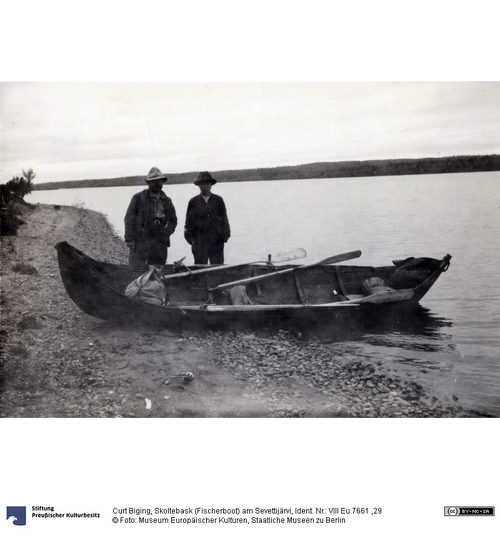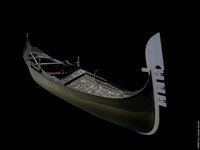Abgebildet ist ein am Ufer liegendes Fischerboot mit zwei dahinter stehenden Männern.
Das Boot ist eine in Karweelbauweise gefertigte Skoltebask (auch: skoltesamiske båtar). Die Boote wurden überwiegend von den Skolt-Samen der Kola-Halbinsel und aus dem Petsamo-Gebiet (heute: Petschenga) gefertigt, waren aber weit verbreitet und wurden auf Seen, Flüssen und Fjorden zum Fischen verwendet.
Inventarbuchtitel: "Eingeborenenboot vom Sevettijärvi"
en

